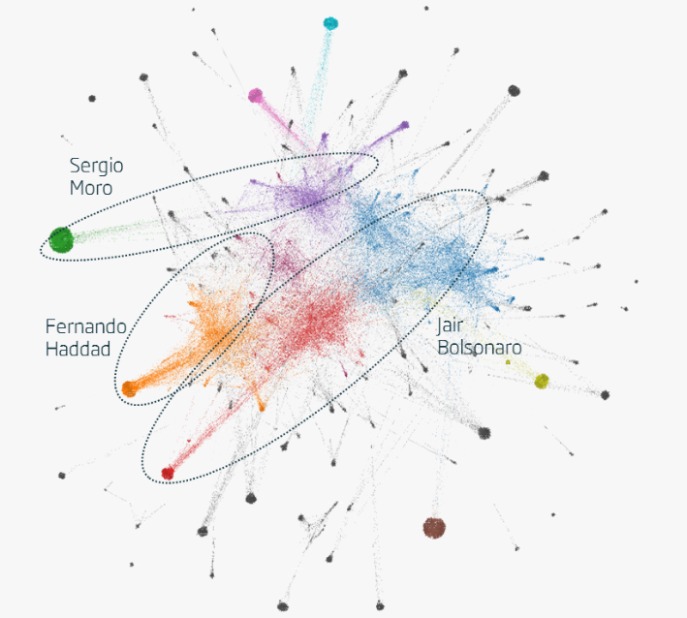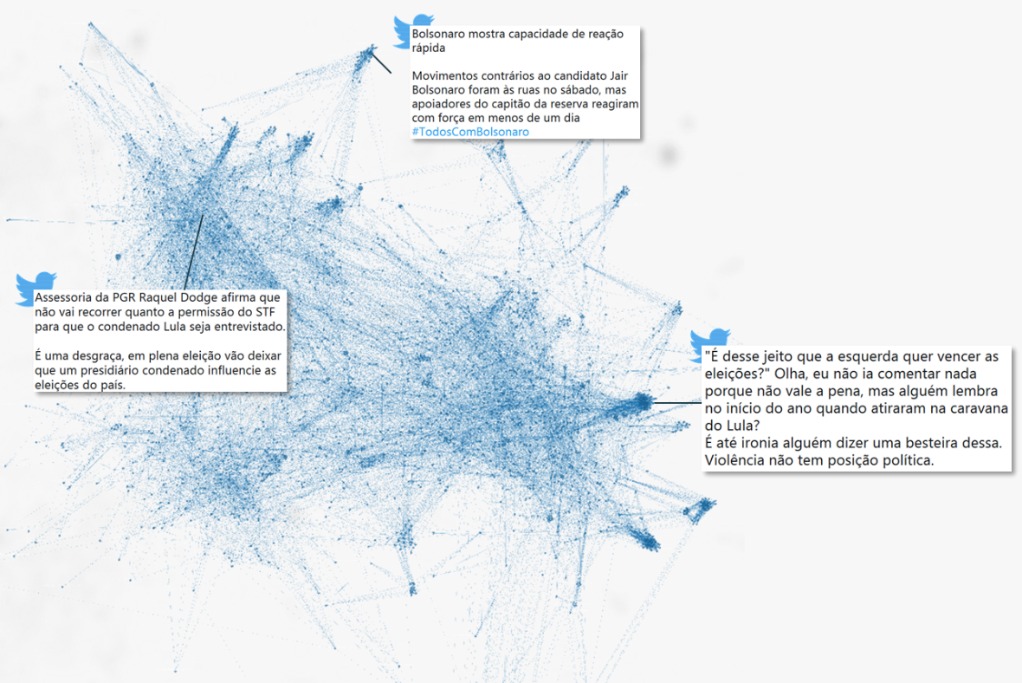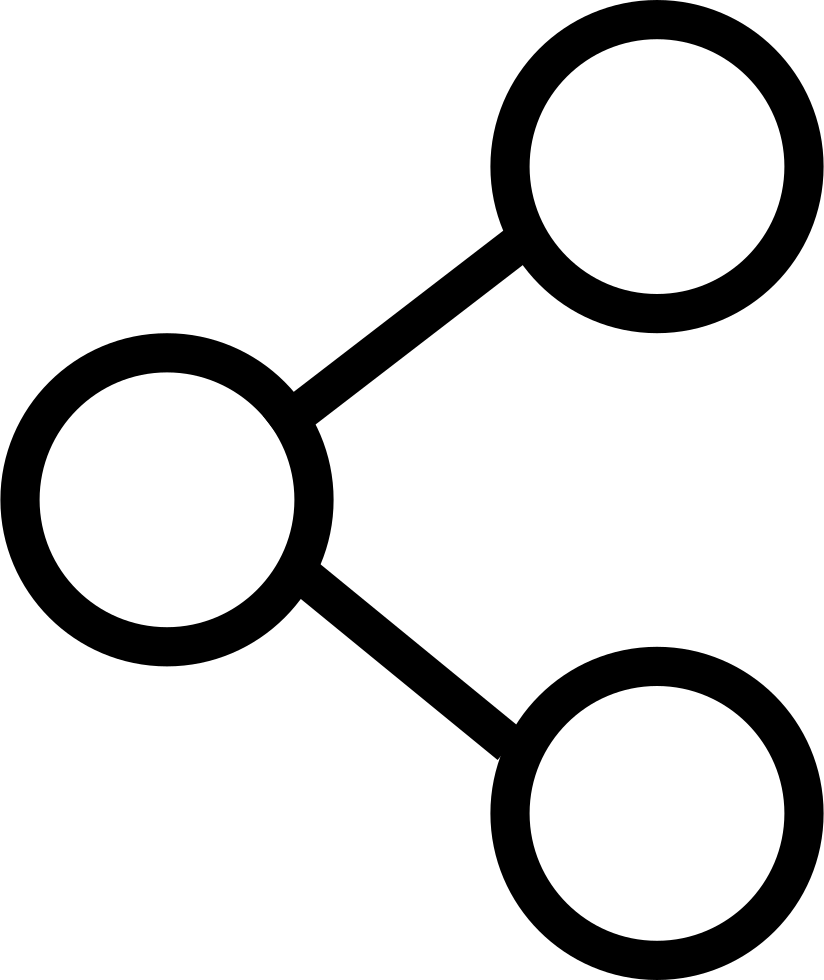
First Round of Brazilian General Elections
Social Conversation Analysis
With a view to understanding the arguments that polarised the first round of the Brazilian Elections, we have analysed discussion on social media in the weeks leading up to voting on 7th October. This analysis has allowed us to identify the main online communities and the arguments they were putting forward.
The supposed organic growth and the dominance of pro-Bolsonaro groups on Brazilian social media - Bolsonaro himself has acknowledged that social media have a large share of the blame for his lead in the polls - has led journalists and even the Superior Electoral Tribunal to wonder why there was no correlation with his declared election spending. Whilst it is Haddad's party that has declared the highest spending on “Internet-based campaigning”, with a total of R$1,013,000, Bolsonaro's party has only declared costs of R$115,000 for “Creation and posting of web pages” [1].

Having analysed the impact of Bolsonaro and Haddad as candidates in the different communities, we can draw several conclusions:
- Jair Bolsonaro
He has greater impact in the communities shown in red and blue. So far as geographic variation is concerned, Jair Bolsonaro has a stronger presence than the other candidates in Rio de Janeiro, a state the Workers’ Party won in 2014 and where the difference in voting compared to 2014 has been large.
The mood of online debate is shown by our analysis to have been positive towards the candidate, with some complaining of persecution by the media and calling for the end of corruption.
- Fernando Haddad
He has greater impact in the communities shown in blue, orange and purple and a higher than average profile in Sao Paolo, Federal District, Pernambuco and Bahia states.
Pernambuco, where the Workers’ Party led voting in the first round, is very positive towards Fernando Haddad, particularly in material posted by students.
As for Bahia, another state where the Workers’ Party made a strong showing, there has been a notable upsurge of content in favour of Jair Bolsonaro with campaigns such as #mulheresconBolsonaro and #todosconBolsonaro. Although more extensive, this content has had a lesser impact and reach, relatively, than threads about Fernando Haddad.
The two states are exceptions and they have not made a big enough impact to affect the rest of the community where overall sentiment in material which mentions Haddad is negative. The arguments which trigger this sentiment for the most part involve cases of corruption.
----
The analysis of online debate also allow us to identify the themes that concern each community.
Blue Community: A community with greater support for Jair Bolsonaro and which uses the argument of the corruption of his opposition.

In this community, the conversation about Jair Bolsonaro is marginally more positive than the conversation about Fernando Haddad, towards whom sentiment is neutral. Discussion of both candidates is focused on Sao Paolo, Rio de Janeiro and Minas Gerais states, but in terms of volume there is much more about Jair Bolsonaro.
As for impact, measured on a scale of 0 to 100, the conversation about Jair Bolsonaro is in the range 40-55 and Fernando Haddad at 30-40.
Orange Community: A community that is not explicitly in favour of Jair Bolsonaro but which does criticise the campaign of Fernando Haddad and labels him for playing the victim for his actions in recent weeks.
Green and Violet Communities: A community which has become more relevant over recent weeks, following the actions of the Judge, Sergio Moro. This community’s arguments are very polarised: Part of the community focuses on corruption and the other part denounces the actions of Sergio Moro and the impact they might have so close to the Elections. This is an argument only put forward by the green community.
This kind of analysis allows us to identify the lines of argument on social media in different groups in favour of or against one candidate or another, such as: positive or negative arguments, arguments from supporters and opponents, major influencers, how specific arguments are to a given place or area and level of impact and reach generated.
Our analysis has identified three main groups: a first community which talks favourably about Jair Bolsonaro, a second which talks more about Fernando Haddad, although with an overall negative sentiment, and lastly a community focused on Sergio Moro, the judge leading Operation Lava Jato against corruption in the government of former President Lula.
In conclusion, both in terms of volume and impact and in terms of sentiment, it can be said that the groups that have been active online in this first round have been more favourable to the candidacy of Jair Bolsonaro than to Haddad’s.
[1] Divulgação de Candidaturas e Contas Eleitorais Eleição Geral Federal 2018 http://divulgacandcontas.tse.jus.br










Add comment